Section 3: Teaching for learning; activities and talk
So far, you have:
- Looked at your students through the lens of the Questioning learning grid
- Gained a sense of what becoming better at Questioning looks like
- Considered how you might shift the culture of the classroom to nurture Questioning
Now we look more closely at things you can actually do in the classroom to provoke, guide and support pupils to get better at Questioning; to build the phases of Questioning mindedness.
Go to the phase that you have already identified as the one that most of your students need to develop next.
In each Tab box below you will find an overview of the teacher’s role followed by a range of suggestions linked to making the classroom culture more Questioning-friendly. After each suggestion you will see a brief statement in green that reinforces the cultural aspect of the idea. While some suggestions are one-off ideas, many can be used several times during a year or indeed be made into a classroom routine and thereby shift the culture.
Moving from Grey → Purple (Receives)
Receives: Minded to try out aspects of finding things out when required
 In the Receives (purple) phase, pupils are shifting from perhaps a general disinterest in things or a lack of awareness of the role and power of questioning to trying out questioning because they are being required to do so. Here they need help to ask a ‘good’ question, to become aware of what the questions uncover and to begin to use some simple search techniques.
In the Receives (purple) phase, pupils are shifting from perhaps a general disinterest in things or a lack of awareness of the role and power of questioning to trying out questioning because they are being required to do so. Here they need help to ask a ‘good’ question, to become aware of what the questions uncover and to begin to use some simple search techniques.
Behaviours to secure, Moving from Grey to Purple
Questioning can be promoted both by how you structure the learning environment and how you help pupils to think of themselves as learners.
Your role as a teacher in this phase is to:
- Explain the role of questioning, encouraging pupils to become intrigued and to notice what the answers to the questions reveal
- Explore the different effects of closed and open questions
- Introduce ‘finding out’ search skills
In other words you are beginning to make Questioning visible: uncovering and exploring how it feels, what makes it work, and what the pupil’s role in the process is to be.
Adopt a character (ages 4-8)
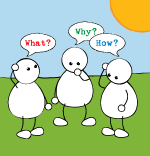
‘Adopt’ a character – real, imaginary, human or animal – who exhibits the best features of perseverance. Talk about the character until your children become familiar with its attributes. When you have set a group to work on a particular task – numeracy, reading, writing etc., leave this character (actual or picture) on their table as a reminder of ‘what to do when you don’t know what to do’.
Show an animation (ages 4-10)
1 minute animation to illustrate an aspect of Questioning.
Use it to talk about trying other ways to achieve what you want to do.
Make your own class animations for different aspects of Questioning.
Read a story (ages 4-10)
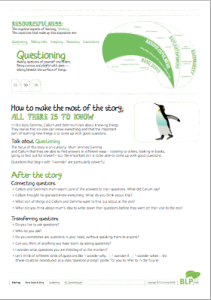
In this story Gemma, Callum and their mum talk about knowing things. They realise that no-one can know everything and that the important part of learning new things is to come up with good questions.
Question Generator (ages 4-10)
Describe the topic and then ask the students to generate as many questions as they can [individually, in pairs or in groups]. Then sort the questions into a hierarchy of interest. The teaching input is then built around these questions. Minority questions can be answered via the subject blog / website.
See page 141 in The Teacher’s Toolkit: Raise classroom achievement with strategies for every Learner by Paul Ginnis.
Linking ideas – Questioning (ages 4-10)
Try this starter activity to introduce pupils to Questioning. Useful at the start of any lesson.
Contains
Questions on display (ages 4-10)
Create question walls in the classroom to illustrate and prompt questioning. Display, for example:
- Student-posted questions about current topics that need resolution.
- ‘The Question of The Day’
- Different types and purposes of questions.
- Questioning routines that the class have defined.
- A lexicon of questions for use when exploring and enquiring.
- A list of questions for use to get started, or unstuck.
- Annotated student work and pictures to provoke questioning.
A class wonder book (ages 4-10)
Help children to value the phrase ‘I wonder…’ as showing genuine curiosity. Start a class Wonder Book. Encourage the children to use ‘I wonder’ questions and record them in the book. Regularly share the book with the class and suggest that children try to find answers to some of the ‘I wonder’ questions. Remember to focus on praising the good ‘I wonders’ before the answers. Opportunities will arise to emphasise the fact that there is not always one simple answer to a question and that children will come up with a variety of responses.
Starting a new topic. Curiosity corner (ages 4-10)
Create a Curiosity Corner with magnifying glasses and interesting objects …. shells, coins, dead insects, flowers …… and lots more! Spend a few minutes each day for children to report what new things they have noticed about the objects.
Old and new (ages 4-10)
Pull together a range of objects which are examples of old and new, especially objects which may be unfamiliar e.g. a teabag and tea strainer. Invite the children to think of ‘I wonder…?’ or ‘What might …?’ questions to discover how the two things differ or are the same..
I spy with my little eye (ages 4-10)
Try this starter activity to introduce pupils to Questioning. Useful at the start of any lesson.
Contains
Kim’s game (ages 4-10)
Play Kim’s Game with small groups asking them how they found out what was missing. Always remember to talk about the noticing.
Are your pupils making progress (ages 4-10)
All about noticing (ages 4-10)
Famous People (ages 4-10)
Developing students’ ability to narrow down their thinking from an infinite number of possibilities. Get students into the habit of asking the best strategic questions to help manage their enquiries.
Contains:
Question time (ages 4-10)
Choose one group to be the Question Time panel as a plenary to a lesson. Sit them at the front, around a table like the real thing, and invite the rest of the class to ask questions about what they have been doing.
How could you encourage good questioning…
- When preparing for a visit
- At the start of a new topic
- During Show and Tell sessions
Guess Who (ages 4-10)
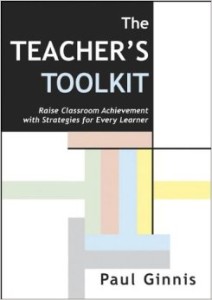
Guess Who: A pack of cards is developed with key events, items, facts, processes, arguments for the topic. The first player in the group takes a card and the others have to ask questions about this. The holder of the card can only answer ‘yes’ or ‘no’ once the item has been identified then the turn passes to the next player.
See page 109 in The Teacher’s Toolkit: Raise classroom achievement with strategies for every Learner by Paul Ginnis.
Set a task through question not instruction (ages 4-10)
Key Questions as Learning Objectives: what better way to foster a culture of inquiry than to spark the whole shooting match off with a big question that gets students thinking critically about what they are going to learn? By asking a big question you can initiate thinking and group discussion that immediate engages students in their prospective learning. By framing it as a question, it can raise motivation, as students feel like they have invested choice in their learning – and by getting students to subsequently formulate the learning objective they really begin to think about the nuances of what they are to learn and why.”
Extract from: http://www.huntingenglish.com/2012/11/10/questioning-top-ten-strategies/
Question Starts
Question Starts is a Visible Thinking Routine that provides students with the opportunity to practise developing good questions that provoke thinking and inquiry into a topic by offering a range of interesting question stems, including: How would it be different if…?, Suppose that…? What if…?, What would change if… For more detail on Question Starts, visit the Visible Thinking website:
http://www.pz.harvard.edu/resources/creative-question-starts
Mystery object in a bag (ages 4-10)
The purpose of this task is to encourage children to ask questions to find out what the mystery object is.
Contains:
Question spotters (ages 4-10)
Appoint ‘question spotters’ when you having a class discussion time and get the children listening for great questions.
Question monitors (ages 4-10)
A monitor, or a pair of monitors, would be given the responsibility to track and monitor the frequency of questions: teacher and student – open or closed: factual or conceptual. You can have them monitor for a given task, or relate more cumulative research by undertaking the monitoring over a week or two of lessons. By exploring the evidence you are signalling to the students that you value evidence, and you are diagnosing the quality of your questioning, and that of the students. You will then have the evidence to know whether you really do have a culture of enquiry – and if not, it illuminates some of the steps you need to take to develop one. The activity sends very powerful messages to students about how highly your value quality questioning.”
Extract from: http://www.huntingenglish.com/2012/11/10/questioning-top-ten-strategies/
Visual aids for a story (ages 4-10)
Find a couple of visual aids for a story before you share it with the children and get them to think about what the story is about first. Model this with ‘I wonder if you can guess what this story might be about?’
Question focused research (ages 4-10)
Ask pupils to
- research possible types of questions using the Internet
- record and analyse the types of questions used in their peer group
- compare their research findings and their observations.
Use this to expand the range of questions used in class and to create guidelines for asking good questions.
Information Hunt (ages 4-10)
Information Hunt: Each student [or pair or group] is given a ‘fact finder’ sheet – this could be a ‘hunter’s map, showing where in the classroom, or wider, information can be found. The materials where the information can be found [books, posters, maps, images, video etc..] are scattered around the classroom. You could build in riddles or puzzles for the students to ‘crack’. This could also be in the form of a game e.g. complete a line of four pieces of information in a 4×4 grid.
See page 118 in The Teacher’s Toolkit: Raise classroom achievement with strategies for every Learner by Paul Ginnis .


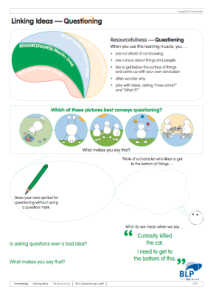

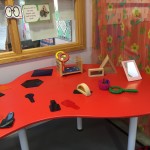

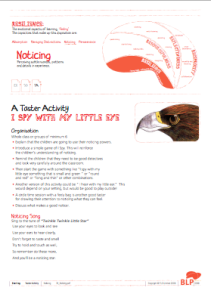

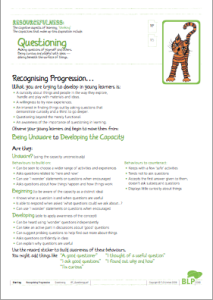
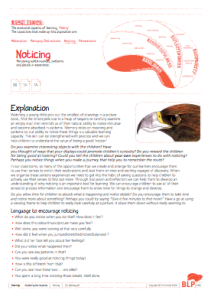






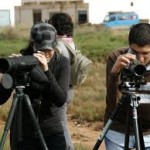


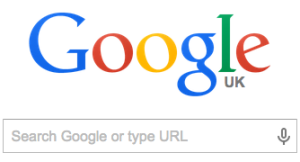
Comments are closed.